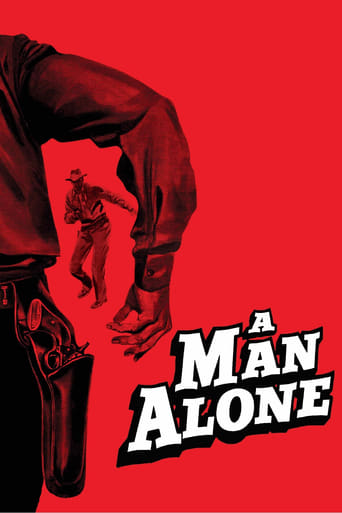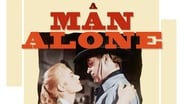Spondonman
Ray Milland directed a film himself for the first time with this, and not a bad effort too. He had a rather up and down career as an actor and continued in the same vein as director.Gunfighter Milland is lost and on foot in the desert, stumbles across a stagecoach with its occupants brutally murdered and as it transpired, robbed. He makes it to the nearest town, is shot at by a deputy sheriff who should really have stuck to driving trains, then witnesses and gets accused of a cold-blooded murder, goes on the run and holes up in a young lady's house whose sheriff father is quarantined with yellow fever. Should he stay or should he go? With Love potentially in the air you know the answer to that. So, now with plenty of time for moralistic asides and romance he tries lamely to clear his name. It's sound and simple fare expertly done and an engrossing oater which also manages to lightly analyse duty (or dooty as Ward Bond might say), justice, hypocrisy and redemption. Poor old Raymond Burr got saddled once again with the deranged baddies part. The Gun is usually the final judge and jury in these kind of Westerns, however not so here - and it ends like a TV episode of Bonanza with the suddenly contented people rolling by like clouds.Refreshingly any blurred lines that are introduced are not allowed; this film is straightforward in every department with all the generally accepted correct morality boxes ticked by the end and well worth watching because of that.
kevin olzak
First time director Ray Milland must have scored a success with this psychological Western typical of the 1950s, as he went on to both direct and star in four more features- 1956's "Lisbon," 1958's "The Safecracker," 1962's "Panic in Year Zero!" and 1967's "Hostile Witness." In the role of Wesley Steele, a gunman of ill repute, having to kill simply to survive, director Milland begins the film with nearly a half hour without (much) dialogue. Steele discovers a massacred stagecoach, five people shot dead (including a little girl), all the money gone. He soon finds himself in a most unfriendly town, where the hapless deputy (Alan Hale Jr.) prefers to shoot first and ask questions later; incredibly, the safest place for Steele to hide from a possible lynching turns out to be the Sheriff's quarantined home, due to his being bedridden with yellow fever. Lovely Mary Murphy, Marlon Brando's leading lady in "The Wild One," is entrusted with the most difficult role, the Sheriff's daughter, who naturally falls for the much older Steele, and capably manages the feat of growing up from 'daddy's little girl' to feisty heroine, inspiring Wes to return to clear his name, and redeeming her own father (Ward Bond), who had fallen under the crooked influence of town banker and criminal mastermind Raymond Burr. You can't go wrong with a supporting cast that includes Lee Van Cleef, Douglas Spencer, Thomas Browne Henry, and Arthur Space. Unfortunately for Mary Murphy, her screen career wound down all too quickly, though television kept her busy for another two decades. Horror/sci fi buffs remember her turns in 1951's "When Worlds Collide," 1954's "The Mad Magician," and 1957's "The Electronic Monster."
MartinHafer
I was surprised to see that Ray Milland not only starred in this western, he directed it! The fact that a British man would star in an American western, however, did not surprise me. After all, if a Tasmanian (Errol Flynn) could star in one--why not Milland--especially since his Welsh accent was pretty faint. Plus, since the US is a country of immigrants, there MUST have been a few Brits in the Old West. However, I am sure none of them had a name like 'Reginald Alfred John Truscott-Jones' (Milland's actual given name)! "A Man Alone" is helped along by having a couple really good heavies--Raymond Burr (a familiar heavy of the 50s until he struck gold playing Perry Mason) and a young Lee Van Cleef (who was always menacing). These two automatically improves the movie from the onset. Ward Bond, a wonderful character actor is on hand to play the sick Sheriff. Plus, while he's not especially well-known today, Milland was a dandy actor (at least until his later years when, like Bette Davis, he would accept ANY part--and a few were pretty bad). Here he's still in his prime--a good, solid leading man--not the macho or romantic type--just a good everyman actor--and a far cry from his sophisticated image of the 1930s.This film starts off very sad. Milland is riding his horse in the middle of the American desert when he comes upon a party from a stage coach--and all of them, including the children, have been murdered. When Milland comes into town, the Deputy Sheriff sneaks up on him--Milland turns and shoots (wounding him). Now the town thinks HE was responsible for the massacre--not realizing some of the town's 'upstanding citizens' were the guilty parties. Milland discovers this but no one believes him. It's up to Milland to clear himself and ferret out the guilty parties by the end of the film.There is a major cliché that hinders the film from being one of the best westerns of the day. When Milland hides out, he just happens to hide out in the home of the Sheriff. While the Sheriff is delirious with fever, there is his pretty daughter in the home as well. When she discovers him and realized everyone is looking for him, she shelters him from the posse!!! Why would a woman do this--particularly the Sheriff's daughter?! This makes no sense--and I wish they'd not relied on such a phony plot device as this. And, when she inexplicably falls in love with him, it seems even more phony.Another cliché comes into play later in the film when Milland has his showdown with the leader of the murders (Burr). Burr refuses to draw his gun, so Milland throws away his advantage and his a fist fight! First, in a fight I am sure that the big and burly Burr would have won. Second, any SANE man would have shot out Burr's kneecaps or put a bullet in his brain--that's the only 'fair fight' that really took place in the West. The fist fight cliché is just sloppy writing.However, the film is entertaining and it does take a few nice detours apart from the clichés. As a result of good acting and part of the writing being good (only part), it is very watchable. Just don't expect a lot and you'll be happy with the results.By the way, Alan Hale is listed in the credits. This is actually Alan Hale, Jr. ('Skipper' from "Gilligan's Island")--not his famous character actor father (who was usually billed as 'Alan Hale').
Spikeopath
Wes Steele is a gunman, his reputation follows him where ever he goes. Then one day he happens upon a dreadful scene, a stagecoach has been attacked and five people have been murdered, including a woman and a child. This sickens Steele who takes up a horse and rides to the nearest town with the best intentions, but no sooner is he there, he quickly becomes a target for blame and hostility. Taking refuge at the home of yellow fever struck Sheriff Gil Corrigan and his daughter Nadine, Steele proves to have a tender side as he helps to aid the ailing sheriff. But an angry mob is out for Steele's neck and when Gil comes around, will he believe that Steele is not responsible for the recent turn of events?Ray Milland's westerns are a mixed bunch, ranging from the mundane (Bugles in the Afternoon), the watchable (California) to the very good - here with A Man Alone. Making his directorial debut, star Milland has managed to craft a genuine mood piece out of a well trodden, and often filmed, story. Milland, utilising his silent feature experience, sets the disquiet tone within the first quarter, where as he comes upon the horror scene, it's played out without dialogue, the mood is set for the next part of the journey, the town.This is an ugly town, corruption and underhand tactics are the order of the day, so much so that when Steele blows into town (literally during a sandstorm) one would think that with his reputation, it would be ideal for him. But things can quickly turn around. Thanks to Milland's portrayal of Steele, it's apparent to us that Steele is weary of the life he has led, his yearning to cast off his burdens evident as his relationship with the Corrigan's starts to blossom. Yet it's funny how quick the milk can turn sour, because seemingly normal people can become a mob, an angry mob intent on justice regardless of the truth. For here there is no truth as the lies have been cast and mud nearly always sticks...Milland is aided in the cast by the always solid Ward Bond (Gil), Raymond Burr (purple suited and black eyed nastiness as town villain Stanley), Lee Van Cleef (Stanley's thug muscle Clanton) and Mary Murphy (bright eyed and bushy tailed Nadine). Shot on location at Snow Canyon in Utah, it's a shame that location work is very much sparse because of the town set plot. However, in a film calling for an oppressive and pot boiling feel, this is something that is easily forgivable. A Man Alone is a very good Western, yes the story has been done far better (re: The Ox Bow Incident for example), but Milland's film deserves your time, and hopefully come the end, also your respect. 7.5/10




